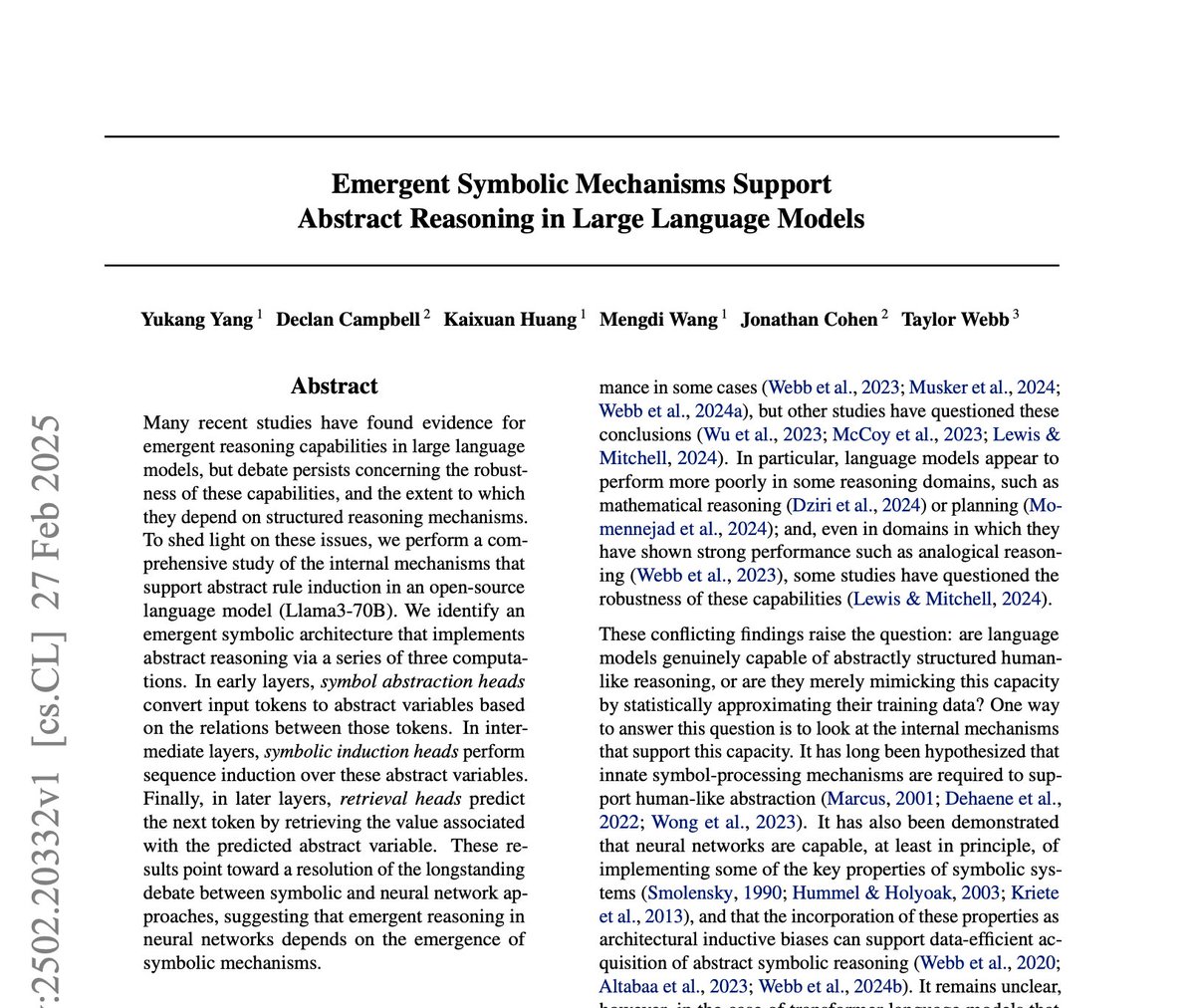
Taylor Webb
@taylorwwebb
Studying cognition in humans and machines.
ID: 921368137668362240
https://scholar.google.com/citations?user=WCmrJoQAAAAJ&hl=en 20-10-2017 13:30:57
425 Tweet
889 Takipçi
547 Takip Edilen








🚨 New paper at NeurIPS Conference w/ Michael Lepori! Most work on interpreting vision models focuses on concrete visual features (edges, objects). But how do models represent abstract visual relations between objects? We adapt NLP interpretability techniques for ViTs to find out! 🔍


Even ducklings🐣can represent abstract visual relations. Can your favorite ViT? In our new NeurIPS Conference paper, we use mechanistic interpretability to find out!

New paper with Alexander Fung, Pramod RT/ಪ್ರಮೋದ್ ರಾ ತಾ , Jessica Chomik , Nancy Kanwisher @[email protected], Ev (like in 'evidence', not Eve) Fedorenko 🇺🇦 on the representations that underlie our intuitive physical reasoning about the world. Thread 🧵about our new preprint 📄✨linked here: tinyurl.com/intphyslang 1/10





New work led by Aaditya Singh: "Strategy coopetition explains the emergence and transience of in-context learning in transformers." We find some surprising things!! E.g. that circuits can simultaneously compete AND cooperate ("coopetition") 😯 🧵👇















